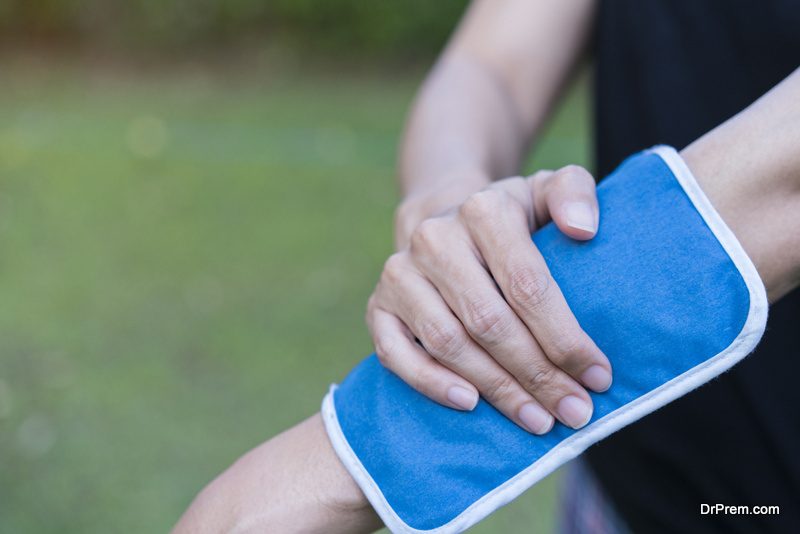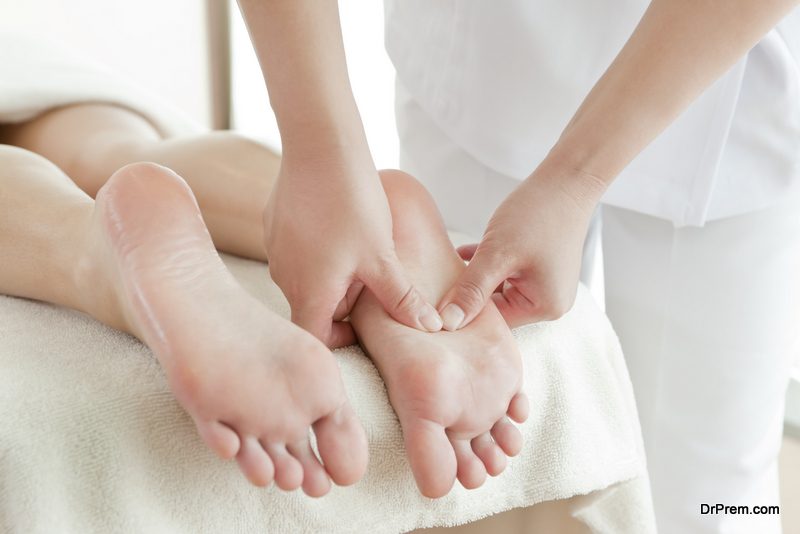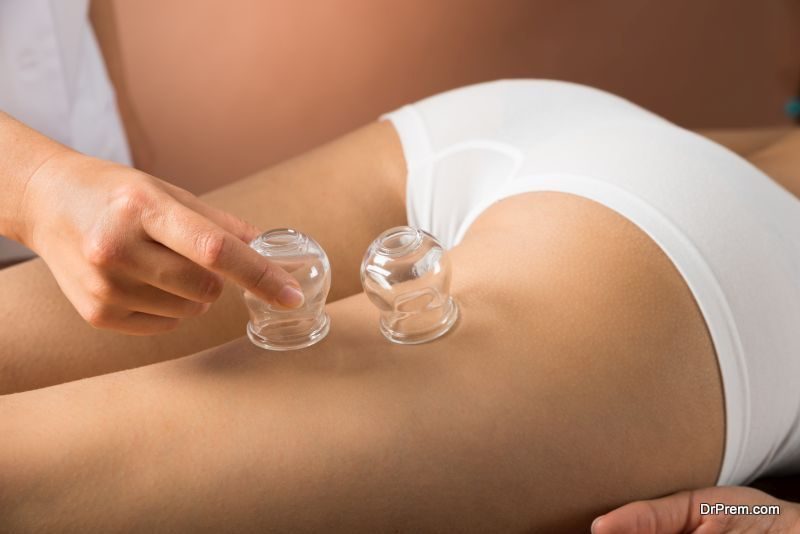When it comes to exercise, sore muscles are par for the course. Whether you’re lifting weights or performing cardio, your muscles grow, contract, and expand, and you’ll know all about it. But what exactly causes sore muscles? Research shows that when you use your muscles in new and different ways, it causes tiny tears. These tears not only create soreness, but they’re what help you bulk up and build strength. But if you’re struggling through a new or recent workout due to muscle soreness, some of these techniques can help you push past the pain.
Keep Moving

One of the first things people want to do when they run into muscle soreness is rest. And while rest and recovery are important parts of any workout regime, too much inactivity can actually make your muscle soreness worse by causing your muscles to stiffen and tighten up. This movement is called active recovery. Things like yoga or a nice, light walk are perfect activities on your rest days and to help ease sore muscles. It also helps keep your body and mind in a steady workout routine. A sure sign that you’re over-exerting yourself is the inability to talk during your workout or becoming too winded. If this happens, slow down your pace or switch to something less intense. Active recovery is about giving your muscles time to rest, not pushing them to full capacity.
Stretch
This is probably the most obvious (and one of the most effective) way to treat and prevent sore muscles. During exercise, your muscles contract and the fibers get shorter. Stretching after your workout helps lengthen them again and promotes mobility. On your rest day, take some time to perform four to five of your favorite stretches. Take it slow. Although you may feel some pulling and discomfort, stretching should not cause any pain. If it does, there may be something else wrong. Hot yoga is especially beneficial because it not only stretches your muscles back out, but it also does so in a room set to approximately 100 degrees. This helps warm your muscles, allowing them to stretch and lengthen more easily.
Hot and Cold
 Speaking of hot, depending on the type of sore muscles you have (and the location), using hot or cold compresses can help ease discomfort. Heat helps promote circulation, bringing healthy, new blood to the sore area. This can speed up the recovery process. Try a heating pad or even a hot tub. The jets in a hot tub can double as a much-needed massage following intense physical activity. Just be sure to give yourself ample time to rest in between, since the jets may aggravate inflammation if used directly following a workout. But don’t underestimate the power of cold, either. Using ice directly after a workout works wonders for muscle inflammation caused by sore muscles. It may even prevent inflammation all together. Inflammation is what prevents your body from moving freely. Keeping inflammation to a minimum following a workout promotes mobility, which we now know is one of the best things for easing sore muscles. Try an ice pack or cryotherapy when needed.
Speaking of hot, depending on the type of sore muscles you have (and the location), using hot or cold compresses can help ease discomfort. Heat helps promote circulation, bringing healthy, new blood to the sore area. This can speed up the recovery process. Try a heating pad or even a hot tub. The jets in a hot tub can double as a much-needed massage following intense physical activity. Just be sure to give yourself ample time to rest in between, since the jets may aggravate inflammation if used directly following a workout. But don’t underestimate the power of cold, either. Using ice directly after a workout works wonders for muscle inflammation caused by sore muscles. It may even prevent inflammation all together. Inflammation is what prevents your body from moving freely. Keeping inflammation to a minimum following a workout promotes mobility, which we now know is one of the best things for easing sore muscles. Try an ice pack or cryotherapy when needed.
Self-Care and Holistic Approaches
Self-care comes in a variety of forms. Some of the most popular ways to treat sore muscles including getting a massage, foam rolling, cupping, acupuncture, or trying a few of these exercises.
Massage
 Massages are notorious for increasing circulation and helping fresh new blood and oxygen reach sore muscles. While many people use massage to relax, it’s a proven method of recovery for athletes and fitness enthusiasts alike.
Massages are notorious for increasing circulation and helping fresh new blood and oxygen reach sore muscles. While many people use massage to relax, it’s a proven method of recovery for athletes and fitness enthusiasts alike.
Foam Rolling
Foam rolling can easily be performed at home and is exactly what it sounds like. People use a long, foam roll to massage different parts of their body in different ways. These rollers are perfect for massaging the calves, thighs, low back, and neck. Start slowly and with minimal pressure if you’re new to foam rolling. Some studies show that this technique may even reduce delayed onset muscle soreness (DOMS), which often sets in between 24 and 72 hours after a workout. If you want to help prevent future sore muscles, try foam rolling even when you’re not sore. This is known as preventative care.
Cupping
 This technique was made popular after watching the 23 time Olympic gold medal swimmer, Michael Phelps, in the 2016 summer Olympics. Swimmers and other athletes were seen with, what appeared to be, circular-shaped bruises all over their body. While this may have looked strange, there was good reason for these markings. Cupping is an ancient form of therapy where a therapists strategically places special cups on your muscles, creating suction. This is said to promote blood flow, reduce inflammation, and help relax the patient and muscles. Those who use this method swear by it and are seemingly unphased by the markings left on their body.
This technique was made popular after watching the 23 time Olympic gold medal swimmer, Michael Phelps, in the 2016 summer Olympics. Swimmers and other athletes were seen with, what appeared to be, circular-shaped bruises all over their body. While this may have looked strange, there was good reason for these markings. Cupping is an ancient form of therapy where a therapists strategically places special cups on your muscles, creating suction. This is said to promote blood flow, reduce inflammation, and help relax the patient and muscles. Those who use this method swear by it and are seemingly unphased by the markings left on their body.
Acupuncture
Acupuncture is commonly used to treat chronic pain, but it also offers benefits for temporary pain caused by sore muscles. Not only can acupuncture help to relax stiff, tense, muscles, but it’s also said to help eliminate muscle knots and spasms. The premise is to use extremely thin needles to puncture the skin and muscle in “trouble” areas. This helps release any stagnation or blockages found in the muscles. Like cupping, acupuncture is an ancient technique with many proven benefits.
Fuel Your Body
 What you put into your body before and after a workout can actually help prevent and ease sore muscles by promoting muscle repair. Foods high in protein are great both before and after your workout. Things like eggs, fish, cottage cheese, yogurt, and bananas help provide the necessary nutrients your muscles need to recovery. Berries are also high in antioxidants, which are said to prevent the onset of sore muscles by reducing the number of free radicals in the body and reactive oxygen species that develop following a workout. It’s also recommended you eat 60-90 minutes before and after a workout to give your body the energy and fuel it needs to perform at optimum levels.
What you put into your body before and after a workout can actually help prevent and ease sore muscles by promoting muscle repair. Foods high in protein are great both before and after your workout. Things like eggs, fish, cottage cheese, yogurt, and bananas help provide the necessary nutrients your muscles need to recovery. Berries are also high in antioxidants, which are said to prevent the onset of sore muscles by reducing the number of free radicals in the body and reactive oxygen species that develop following a workout. It’s also recommended you eat 60-90 minutes before and after a workout to give your body the energy and fuel it needs to perform at optimum levels.
Sore muscles are simply part of the “game” when it comes to exercise. Whether you’re playing sports, weight training, or performing cardio, as your muscles work, they will inevitably get sore. This is a positive sign of growth, but it can be quite uncomfortable. Use one or more of these tips and never miss a workout again due to sore muscles.
Article Submitted By Community Writer




